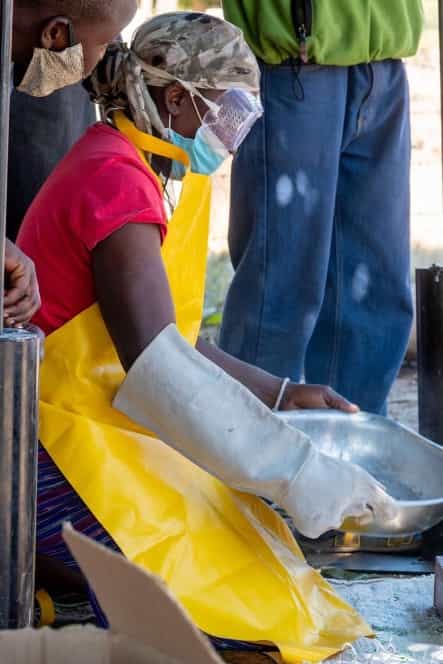
🍾 Empty bottles turn into brick-making raw material
The Jabulani Community near Victoria Falls in Zimbabwe uses discarded bottles to produce a special type of brick that "glitters and shines."
Share this story!
At one point in Zimbabwe, almost all empty bottles, once containing soft drinks or alcohol, had a value that compelled people to guard them jealously or return them and not throw them away.
This promoted recycling or reuse of the same and reduced environmental pollution in a great way. To date, some soft drinks and empty bottles still have value.
However, new beer varieties were introduced. These bottles didn't have any value and were thrown away, polluting the environment. This improper disposal of bottle waste created an environmental challenge that required new thinking.
Bottles become brick-making raw materials
The Jabulani Community near Victoria Falls in Zimbabwe’s Matabeleland Province in partnership with Wilderness Safaris has come up with a smart way to deal with empty bottle waste: turning the waste bottle material into brick-making raw materials.
Izhani Mobona (which means come and see), the cooperative implementing the project told Warp News that the role of the community was to pick empty bottles thrown around and carefully pound them into fine granules which will be then mixed with other raw materials such as sand and cement creating “special type of brick and paving materials”.

The waste bottle material is used to produce a special type of brick that glitters and shines. The bricks are normally used in the special areas of any building such as the front or verandah or anywhere where the owner may deem fit.
“We will be starting the brick making soon but the pounding of bottles has already started, we are now waiting for our partners to provide cement for the project to kick off,” said Izhani Mobona Vice-Chairperson, Innovater Nyoni.
Nyoni noted that the cooperative was targeting to pound a significant amount of bottles daily. Enough to produce over 100 special bricks per day.
He said the brick-making project will help the ten cooperative members to increase earnings and to clean the environment in the process.
“Through selling bricks we will be able to improve our livelihoods, send our children to school and provide other basics for our children,” he told Warp News.
Supporting communities that used to rely on tourism
Wilderness Safaris Community Liaison Officer Zambezi Region, Shuvanayi Taruvinga noted that the company was supporting communities that previously relied on tourism-related incomes.
“We have noticed that because of COVID-19, communities at the boundaries of National Parks no longer have incomes, so to reduce wildlife-related crimes such as poaching we have decided to fund those communities to embark on other income-generating programs,” she said, adding that the brick making project was one such project.
Zimbabwe is home to the “Big Five” namely elephant, rhino, buffalo, lion, and the leopard. The Southern African country is also home to other wildlife and bird species.
Hwange National Park in Matabeleland North Province is Zimbabwe’s largest game reserve.
🗳 Since democracy is crucial in a fact-based optimistic world... we remind our readers of the democratic status of the countries we write about:
Zimbabwe has a Global Freedom Score of 28 and has the status Not Free.
By becoming a premium supporter, you help in the creation and sharing of fact-based optimistic news all over the world.


